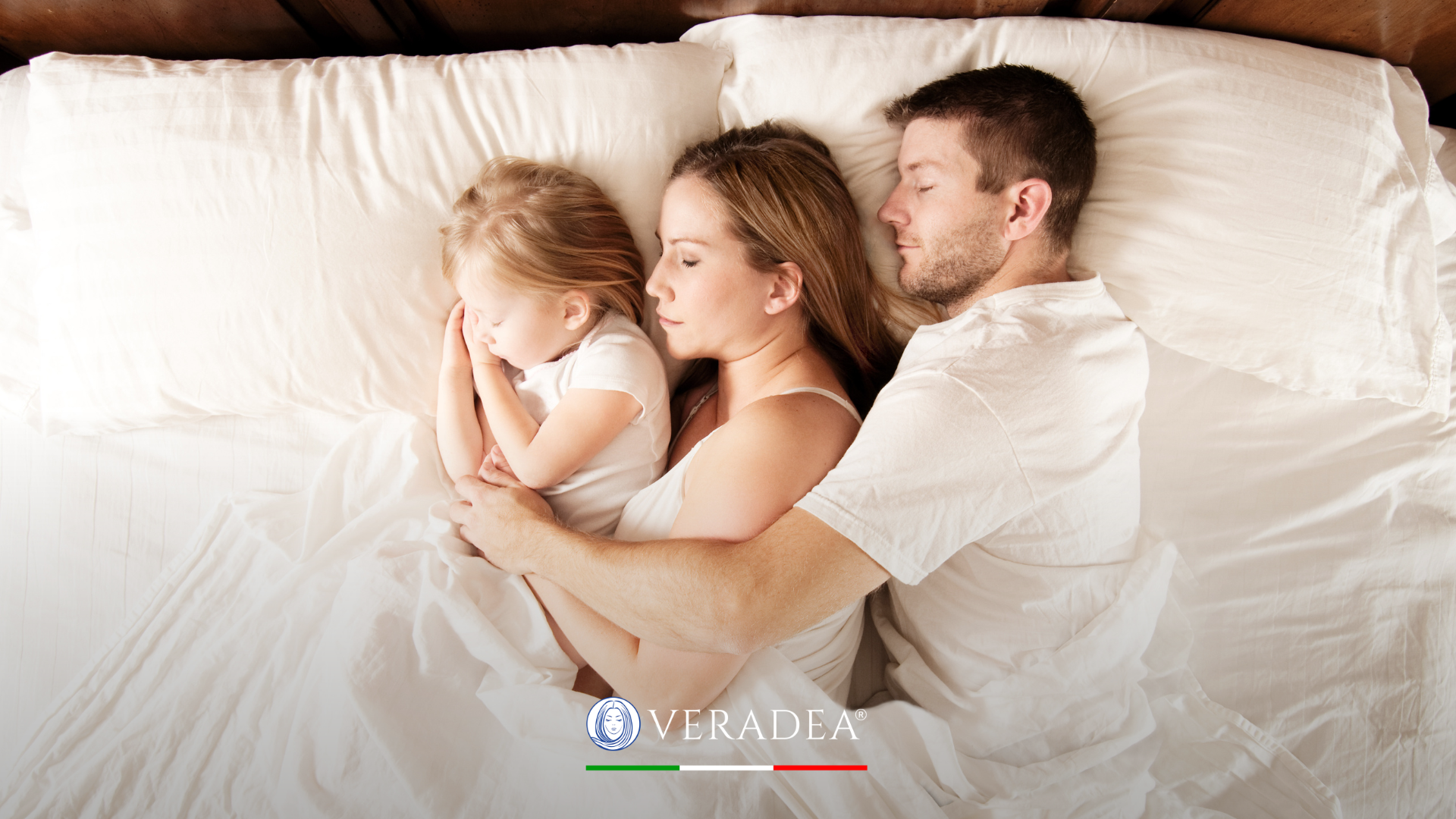
How sleep changes with age: a journey through the stages of life
Sleep is essential for both physical and mental well-being, but its duration, quality, and structure change significantly throughout life. From infancy to adulthood, our sleep needs—and the sleep disturbances we may experience—evolve dramatically. Understanding these changes is key to improving sleep quality and adopting appropriate solutions, including choosing the right mattresses and beds.
Newborns: sleep as the engine of growth
In the first months of life, newborns sleep an average of 14 to 17 hours a day, spread across daytime and nighttime naps. The circadian rhythm is not yet developed, and sleep cycles are very short. Sleep is crucial during this stage for brain and physical development, so it’s important to create a safe and comfortable environment, with a mattress designed specifically for infants.
Children: the phase of learning and memory consolidation
During childhood, sleep becomes more structured. Children aged 3 to 5 should sleep between 10 and 13 hours per night. At this stage, sleep is vital for memory consolidation and learning. However, quality of sleep may be affected by issues such as nightmares, night terrors, or pediatric sleep apnea. Good sleep hygiene and a mattress that supports growth are essential for avoiding discomfort.
Teenagers: between hormonal changes and irregular rhythms
With puberty, the circadian rhythm naturally shifts later, making it harder for teens to fall asleep early. However, school and daily responsibilities often force them to wake up early, leading to chronic sleep deprivation. Teenagers still need 8 to 10 hours of sleep, but often don’t get enough. Sleep disorders in this stage are often linked to stress, screen use, and emotional changes. A low-stimulation bedroom, a comfortable bed, and a memory foam mattress that adapts to their growing bodies can help improve rest.
Adults: managing stress and responsibilities
In adulthood, the recommended amount of sleep is 7 to 9 hours per night. However, stress, work, and parenting responsibilities can take a toll on sleep quality. Problems such as insomnia, difficulty falling or staying asleep are common. Choosing a high-quality mattress tailored to body weight and sleep habits, along with a memory pillow that supports the neck and head, can make a big difference in improving sleep.
Seniors: lighter sleep and frequent awakenings
With age, sleep tends to become lighter and more fragmented, with a reduction in REM sleep. Seniors often wake up multiple times during the night and may have trouble falling back asleep. Early awakenings and daytime sleepiness are common and can be due to physiological factors, hormonal changes, or health issues. Sleep quality can be enhanced with orthopedic mattresses designed to reduce pressure points and promote proper posture.
The best mattresses for every age group
Choosing the right mattress is key at every stage of life. Here’s a quick guide:
- Newborns and children: firm, breathable, and safety-certified mattresses
- Teenagers: adaptive mattresses, like memory foam, to support growth and provide proper support
- Adults: customized mattresses based on sleep position, body weight, and personal preferences (springs or foam)
- Seniors: orthopedic, anti-bedsore mattresses that are easy to maintain and ideal for prolonged use in bed
Sleep accompanies us through every phase of life, evolving with our bodies and minds. Understanding the specific needs of each age group is the first step toward improving daily well-being. Investing in restorative sleep—through healthy habits and the right mattresses and pillows—means investing in health, energy, and quality of life.
